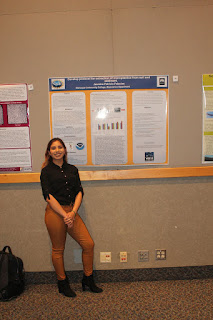Blog Post Week 5
Poster Abstract*
Micro plastics draw a concern to how safe the ocean water is for sea animals. Though the impact of ingesting the plastic could potentially affect the animals is not yet well understood on the future impact that it could cause. However, statistics show that numerous organisms, both vertebrates and invertebrates have been found to ingest micro plastics (NOAA Marine Debris Program 2015). Scientist are concerned that organisms ingesting plastics debris may be exposed contaminants absorbed by the plastics, and the plastic debris provides a source for chemical contaminants to the environment. It is the goal of this project to optimize the extraction of micro plastics from sediment so it can be utilized to understand the distribution of micro plastics within the Phoenix metropolitan area. The purpose of this research is to determine how effective the NOAA protocols are for removing micro plastics from sediments. It is hypothesized that the NOAA protocols will only be effective for certain types of plastics based on their density and the density of the extraction solution used . The NOAA protocol was modified to make the extraction of micro plastics from sediment and solution more effective. What was observed was the proficiency of micro plastic extraction depending on the different plastic and solution. For this project plastics 1-7 were collected and shredded into to micro plastics size, where they will be going through separation funnel extraction with three different solutions (Distilled Water, Sodium Chloride, Potassium Carbonate). The reason these three different solutions were used is because of different densities of the the micro plastics. (This is a photo of me & Maricruz Shredding Plastic 1)

Comments
Post a Comment